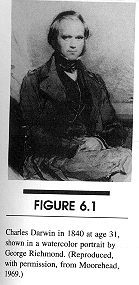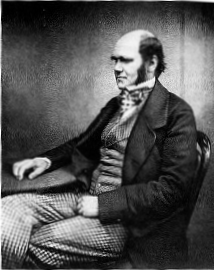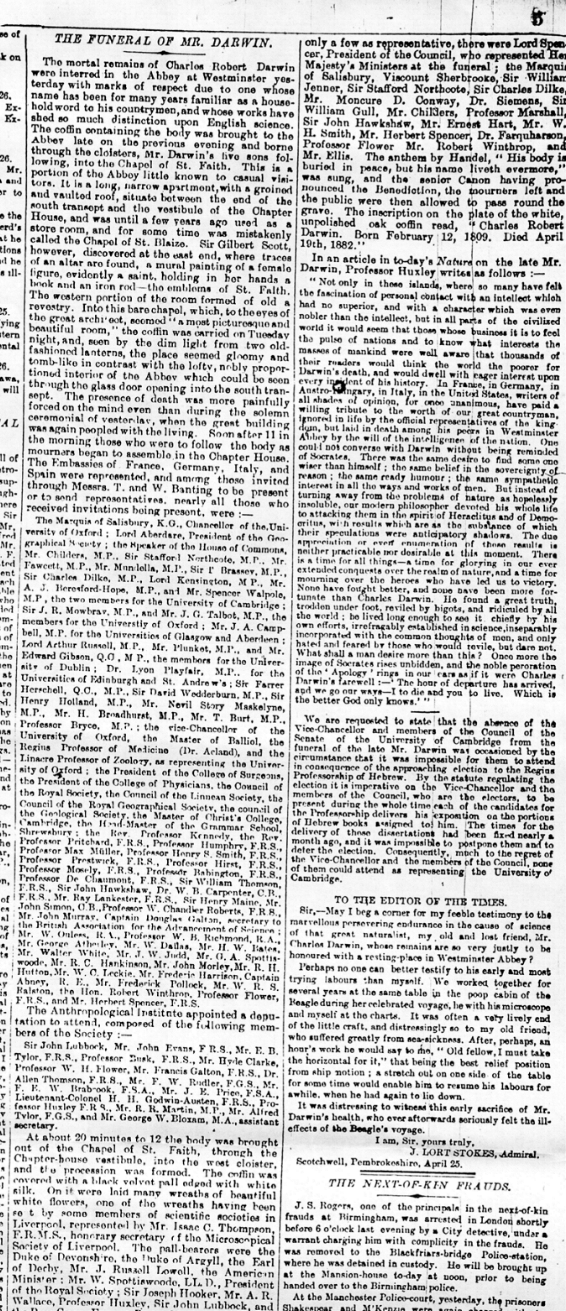



age 45
On March 26, 1835, Charles Darwin recorded an incident in his "The Voyage of the Beagle", in which he was bitten by a Reduviid bug while sleeping in a village in Argentina:

In his own words:
"We slept in the village, which is a small place, surrounded by gardens, and forms the most southern part, thatis cultivated, of the province of Mendoza; it is five leagues south of the capital. At night I experienced an attack (for it deserves no less a name) of the Benchuca (a species of Reduvius) the great black bug of the Pampas. It is most disgusting to feel soft, wingless insects, about aninchlong, crawling over one's body. Before sucking, they are quite thin, but afterwards become round and bloated with blood, and in this state are easily crushed. They are also found in the northern parts of Chile and in Peru."
This insect was the triatomid, Triamtoma infestans, of which today more than 70% of the insects in that region are infected with T. cruzi. Also 12% of the population in Mendoza today has antibodies against T. cruzi.
Darwin returned to his ship and even brought back some of these insects and fed them on the sailors. Darwin was at that time one of the most active members of the Beagle's crew. He often took long overland expeditions and was a mountain climber. He retuned to England in 1836 and in 1838 his health suddenly became poor. His health became progressively worse and he suffered from periodic vomiting, fatigue and flatulence. After social dinners he had violent shivering and vomiting attacks, and mainly for these reasons he gave up all social interactions. His diaries are full of descriptions of his mysterious illness. He wrote to the Botanist, Joseph Hooker, in 1845:
"I believe that I have not had a whole day, or rather night, without my stomach being greatly disordered, during these last three years, and most days great prostration of strength."
In 1849 he was too ill to attend his father's funeral. He wrote:
" I was quite broken down, head swimmy, hands trembling and never a week without violent vomiting."

Charles Darwin - age 60
He was examined by many famous physicians but no cause of this disease could be found. Many theories were proposed for his illness. These range from suggestions that he was a hypochondriac, that he suffered an Oedipal Complex or a psychosis, that he had an allergy to pigeons, and even that he was being poisoned by arsenic in his medications.
A recent hypothesis is that he had lactose intolerance (Campbell and Mathews, 2005). Following is a Table taken from this paper.
Systemic lactose intolerance compared with Darwin’s disease
|
||||||||||||||||||||||||||||||||||||||||||||||||||||||||||||
Another distinct possibility is that he had contracted Chagas Disease while on the voyage, since five years is the average latent period before the disease becomes chronic, and many of his symptoms could be symptoms of Chagas Disease, but there are many other explanations that have been proposed over the years. I (LS) have suggested (in Evolution and the Molecular Revolution, eds. C. Marshall and J.W. Schopf, Jones and Bartlett, Boston, 1996) that we could settle this once and for all by performing PCR to look for parasite genes. It should be possible since we know just where he is buried, right next to Isaac Newton in Westminster Abbey, but I never have succeeded in obtaining a piece of Charles for this study!
 |
 |
Click here to see a paper on this topic.
Death certificate of Charles Darwin:

Article from the London Times - April 27, 1882:
Questions:
1. What is the evidence that Darwin may have contracted Chagas Disease? What about lactose intolerance?
2. How could we possible prove these hypotheses, based on what you have learned about diagnosis of this disease?